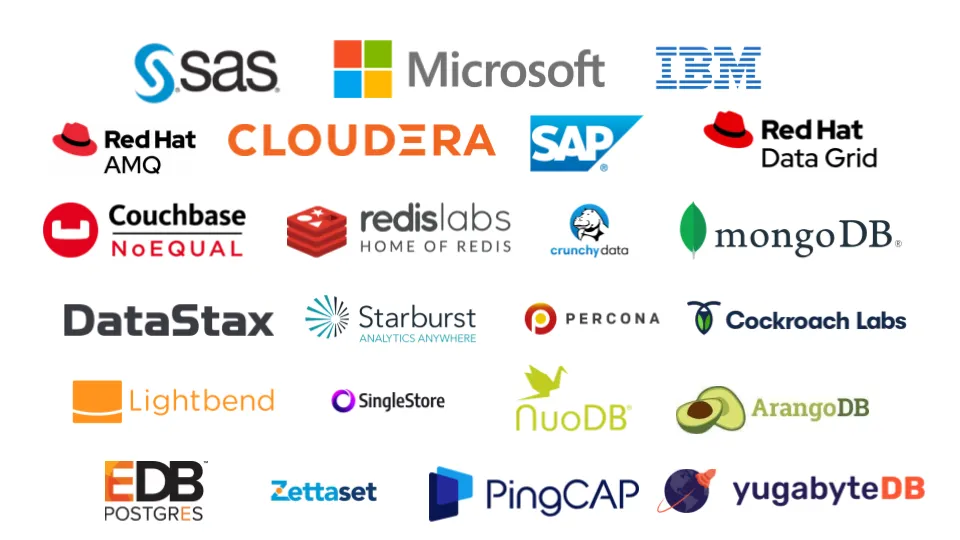Introduction
Databases and data analytics provide methods for ingesting, storing, processing, and analyzing datasets from a variety of sources for use cases such as mobile and ecommerce applications, AI/ML, business intelligence, and more.
Why deploy databases and data analytics workloads on containers and Kubernetes?
- Agility - Deploy and manage modularized databases and data analytics workloads anywhere with speed, allowing faster project execution and more frequent updates.
- Elastic scaling - Dynamic scaling of compute resources to meet the changing needs of databases and data analytics workloads.
- Portability - Containerize once, deploy and move anywhere.
Red Hat resources
Potential challenges
Potential executional challenges for databases and data analytics workloads on containers and Kubernetes include:
- Downtime and data loss - Failures, outages, data corruption
- Operational complexity - Architecture and operations (e.g., containers, storage, networking, data protection), performance tradeoff
- Lack of ISV support - ISV endorsement or support documentation
- Lack of expertise - Gaps in skills and processes
Benefits of deploying databases and data analytics on Red Hat OpenShift
Red Hat® OpenShift® allows you to run databases and data analytics in a consistent way across clouds to accelerate delivery of cloud-native applications.
Automated operations
Kubernetes Operators simplify and automate the deployment, scaling, and lifecycle management of containerized databases and data analytics on Red Hat OpenShift. This helps enable DevOps, and allows database administrators to focus on more strategic tasks such as controlling user access and security.
Consistency and portability
Secure deployment, operations, and portability in a consistent way across the hybrid cloud. Run containerized databases and data analytics in the same manner as the other components of the cloud-native application(s).
Partnerships and integrations with ISVs
Red Hat has strategic partnerships and integrations with key database and data analytics ISVs such as Microsoft, Cloudera, MongoDB, Crunchydata, Couchbase, and Starburst. Additionally, streams for Apache Kafka (Kafka on Kubernetes) uses Kubernetes Operators to help make our shared customers successfu

Red Hat Marketplace
Red Hat Marketplace is a simpler way to buy and deploy container-based software on Red Hat OpenShift, including databases and data analytics workloads.
The official Red Hat blog
Get the latest information about our ecosystem of customers, partners, and communities.